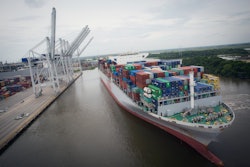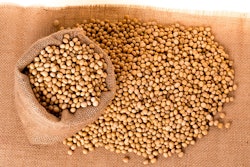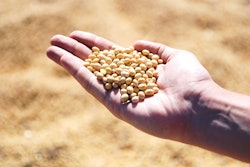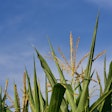
Trade agreements, tariffs, and the effects on American products and production are at the top of the news cycle and the top of the feed and grain industry’s minds.
During the “International Trade Issues and Impacts on U.S. Agriculture” session Thursday morning at IPPE, Peter Rohde, senior member, Informa’s Agribusiness Intelligence, IEG Vantage, and David Williams, vice president, Informa Economics IEG, discussed various trade issues and what their impacts have been in the 2018/19 year.
They also made predictions as to how these issues will impact the coming year.
Williams explained that there are several countries that have a large impact on the U.S.: China, Japan, Korea and Mexico, therefore having good trade agreements with these countries is necessary to be successful.
With various trade talks happening, Williams also noted that farmers are in distress right now.
“U.S. farm debt is approaching record highs set around the 1980s far crisis,” he says. “Delinquency rates have climbed. Farmers need to be using risk management solutions in order to be on top of things.”
Williams said trade barriers put more pressure on managing debt. “We’re not talking about the big companies – the ABCDs -- only being at risk,” he says. “Family firms also have millions of dollars at risk.”
Rohde points out that the USDA hasn’t come out with acreage projections yet, but IEG is predicting corn acres will be up about 2 million to 91.5 million this year, and soybeans will come down 2 million to 89 million acres. Wheat will also be down.
Rohde says the drop in soybean acres isn’t as bad as predicted. Many thought with the tariffs, less soy acres would be planted. “Markets are starting to recover, however, and farmers seem to be staying with soybeans.”
Rohde also pointed out that it wasn’t just the Trump tariffs in March that dinged prices. “We also had the best soybean crop ever,” he explains. “We would have still had a $1.50 drop in prices regardless of tariffs.”
Rohde notes that the key time period for U.S. exports is harvest time – September to February – then export demand shifts to South America. “We’ve missed the boat this year,” he says. “This is why we predict export numbers will be down.
“We’re in the time period where U.S. exports to China fall off,” he says. “Beans don’t usually move hard this time of year.”
The pair also noted that Brazil is becoming more competitive with the U.S., but weather conditions have hampered its crop and estimates for the soybean harvest could come in lower than predicted.
While other countries’ exports have been a bright spot for the U.S., those numbers have not made up for the lost exports to China.
Rohde notes we’ve been hearing a lot of news of sales to China, but inspection numbers mean they’re on the boat and being shipped. “Some of these sales will be in the 18/19 crop year,” he says. “Some will be in the 19/20 crop year.
The inspection process will be highly scrutinized, says Williams, to see if those sales come to fruition.
“I’m even more bearish when we talk about these numbers,” he says. “When we see the difference between sales and inspections, we’ll see exports to China slide.”
Another item of note is the fact that China has adjusted its demand for soy.
“China is eating more meat, therefore importing more soy for feed,” says Rohde. “But, with the tariffs, they’ve adjusted and started looking at alternatives.”
Williams agrees. “They’re cutting back on feed,” he says. “They’re not going to be dependent on a trade war and tariffs to feed their animals.”
Unfortunately, the bottom line is China can make do without U.S. soybeans.
Rohde concludes, “China simply doesn’t have to buy beans from us.”


















